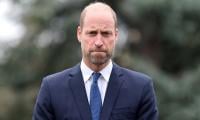ISLAMABAD: Government on Wednesday projected debt-to-GDP ratio to decline over the next few years as most of the major adjustments to fiscal and monetary policies have been made.
The change in the public debt from 1 July, 2018 and 30 November 2020 was due to a correction of the economic policies, especially overvalued exchange rate and excessive borrowing, a spokesperson of the ministry of finance.
“The increase in debt during the tenure of present government occurred mainly during FY19 as an unavoidable consequence of erroneous policies of the previous government,” the finance ministry said in a statement. “Had the previous government maintained a market-based exchange rate, a sustainable level of current account deficit, adequate cash buffers and a long-term domestic borrowing profile, the present government would not have had to make all these difficult adjustments and public debt burden would have been reduced on the back of fiscal consolidation efforts of the present government supported by aggressive control on expenses and growth in tax and non-tax revenues.”
The ministry’s spokesperson blamed the previous governments for all the present economic woes.
“The previous government resorted to short-term debt instruments without maintaining adequate cash buffers, and relied heavily on SBP borrowing. This short-term debt profile has resulted in high interest costs on past debt. The present government has had to pay Rs5.7 trillion (47 percent of the increase) as interest on debts borrowed by the previous regimes.” the spokesperson said.
“The previous government artificially maintained the exchange rate of the Rupee much above its market value. A large increase in public debt has resulted from the abrupt exchange rate depreciation, which was inevitable because the overvalued exchange rate triggered a balance of payment crisis. The only alternative was a default on external liabilities, which was obviously not an option. Public debt increased by Rs3 trillion (25 percent of the increase) due to this currency devaluation.”
The ministry of finance’s official also attributed high primary deficits to tax cuts.
“The unjustified tax cuts by the previous government coupled with the impact of subsequent economic slowdown due to the Covid-19 pandemic resulted in higher than estimated primary deficits. Rs2.5 trillion (21 percent of the increase) was borrowed for financing of primary deficit during first 29 months of the present government,” said the official. “Rs0.6 trillion (5 percent of the increase) was on account of increased cash balances of the government to meet emergency requirements. The present government took the economically sound policy of not borrowing from the SBP and maintaining a cash buffer, which led to a one-off increase in debt. However, this increase in debt was offset by corresponding increase in the government’s liquid cash balances. Furthermore, Rs0.3 trillion (approx. 2 percent of the increase) was due to difference between the face value (which is used for recording of debt) and the realized value (which is recorded as budgetary receipt) of government bonds issued during this period.”















